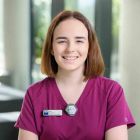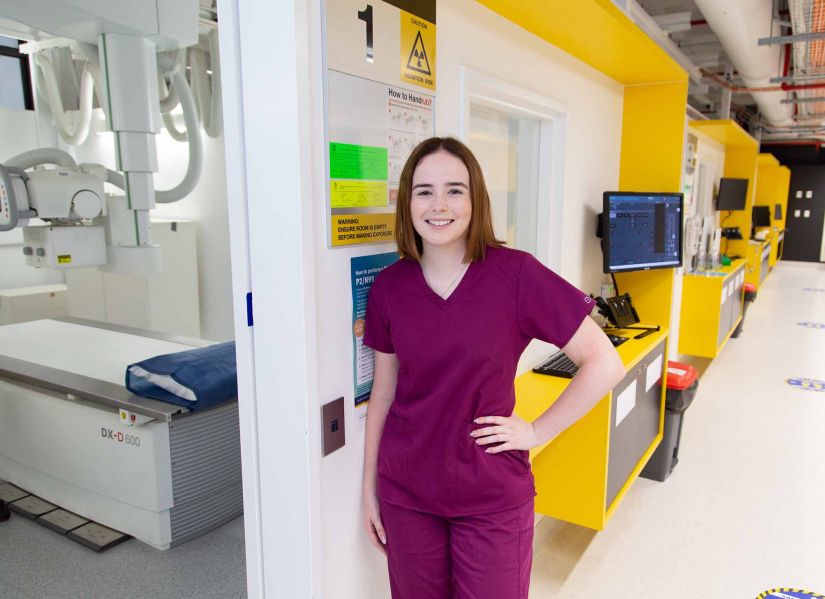
Zoe Gibbs, 4 April, 2023
Before graduating at the end of 2022, Zoe Gibbs wrote about her experiences as a medical imaging student.
Read about:
Why did you want to study medical imaging?
Medical imaging is a physically and emotionally demanding career and takes a lot of people skills and problem solving, which is not necessarily what you’d expect. However, it is exactly this that makes the degree so enjoyable.
I became interested in this course because of my own healthcare journey. At age 14 I was diagnosed with scoliosis, which is a sideways curvature of the spine. Since I was still growing, it was too early to do surgery, so I had to wear a back brace and get regular monitoring x-rays to check the progression of the curve.
I was very fortunate that the radiographer I saw for all my imaging was incredibly kind and passionate. He knew I was interested in health, but also had a passion for mathematics and physics, and mentioned that radiography would be an excellent combination of the two.
What’s the best thing about studying medical imaging?
There are so many awesome parts of the medical imaging degree. The medical imaging lab on campus is an invaluable resource, and the staff are all so knowledgeable. But the best part by far is the placement. Placement commences from the second semester of first year, and continues throughout, with the final year of the degree being entirely focused on placement and your honours project.
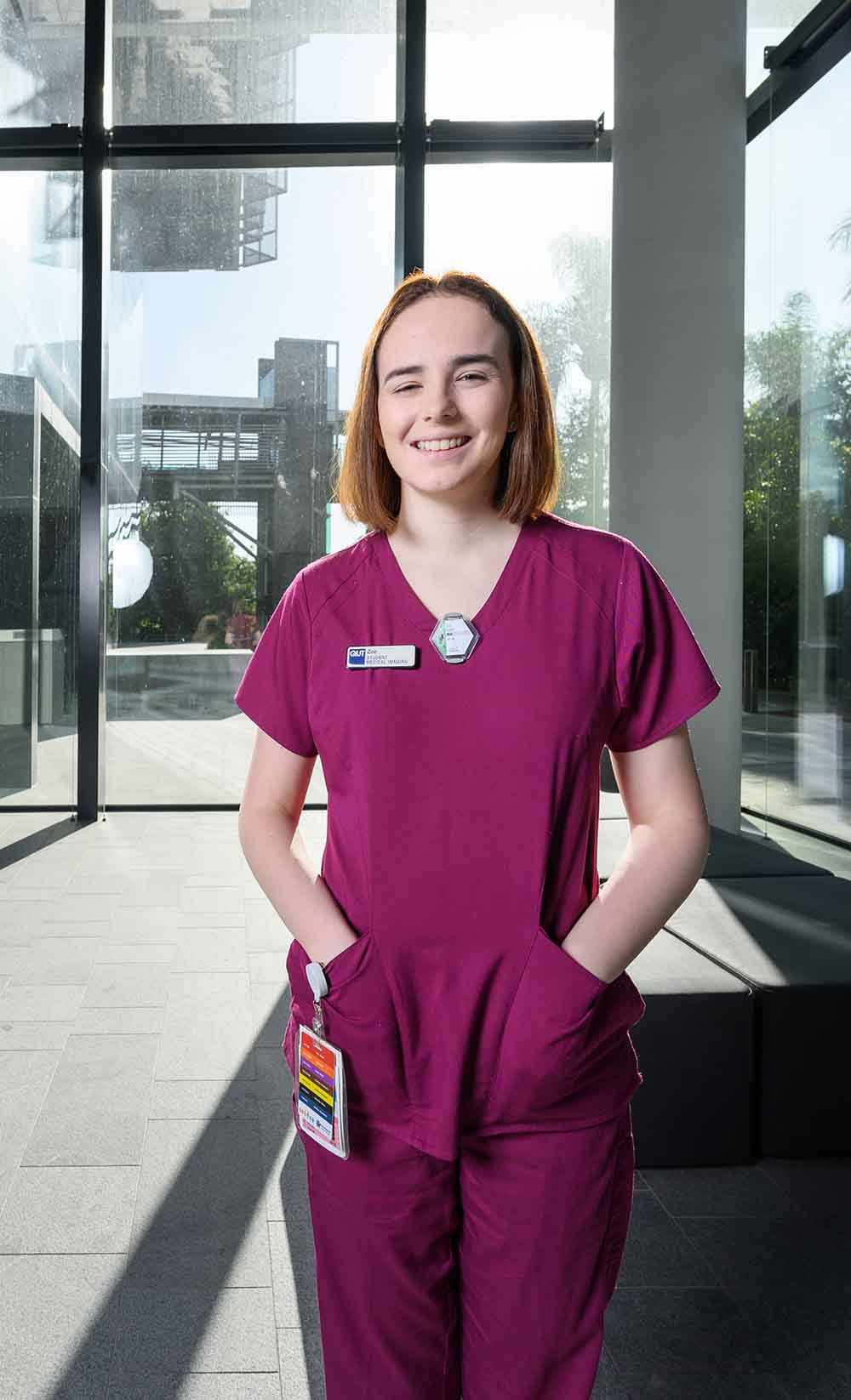
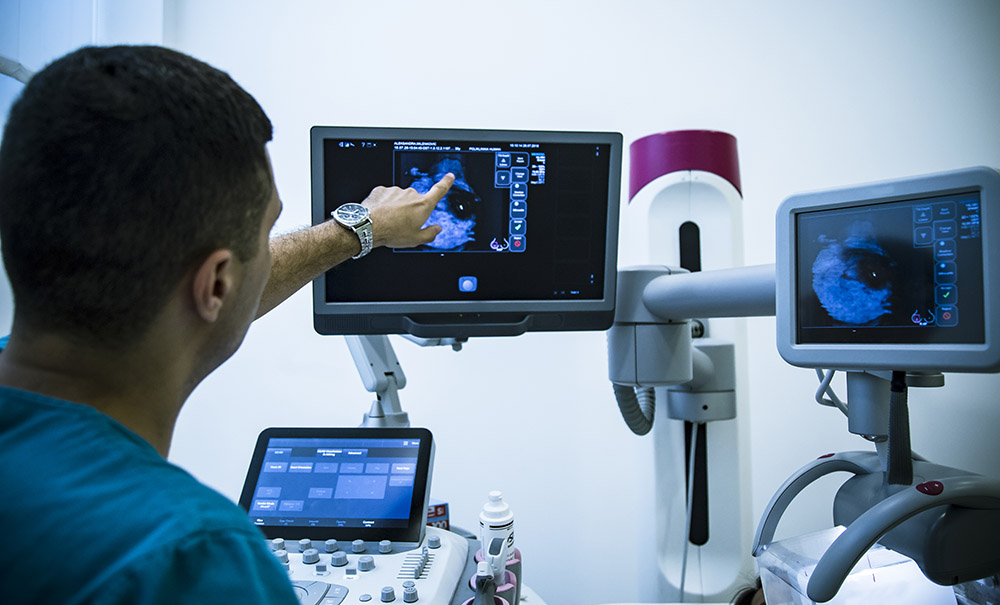
What do you do when you’re on a practical placement?
Placements give you an opportunity to really integrate yourself into the allied health team. You work alongside future colleagues who can help teach and guide you beyond what is possible in a normal classroom. You also learn to interact with people with diverse injuries in a range of different settings.
I’ve been able to undertake placements outside of Brisbane. When you travel to more regional areas you interact with many different patients, and the trauma tends to become a lot more intense. But that's what I really enjoy, working with blood and guts, and it’s a very important part of medical imaging. It’s helpful to see that before I begin my career.
Some of my favourite placement experiences have happened in my last year of study. I've been really lucky to be placed at the Children's Hospital. It’s been so much fun working with kids, that really is my passion. No matter where I've been though, it's been such a positive experience and so exciting to see what I'll be doing when I finish the degree.
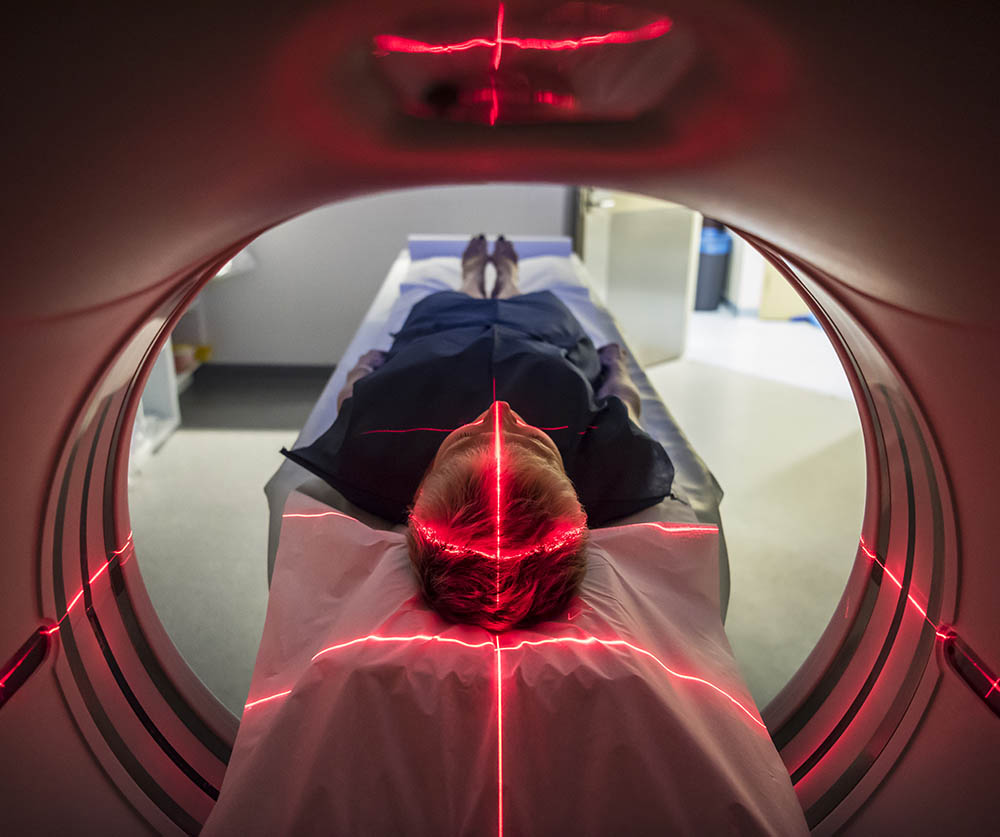
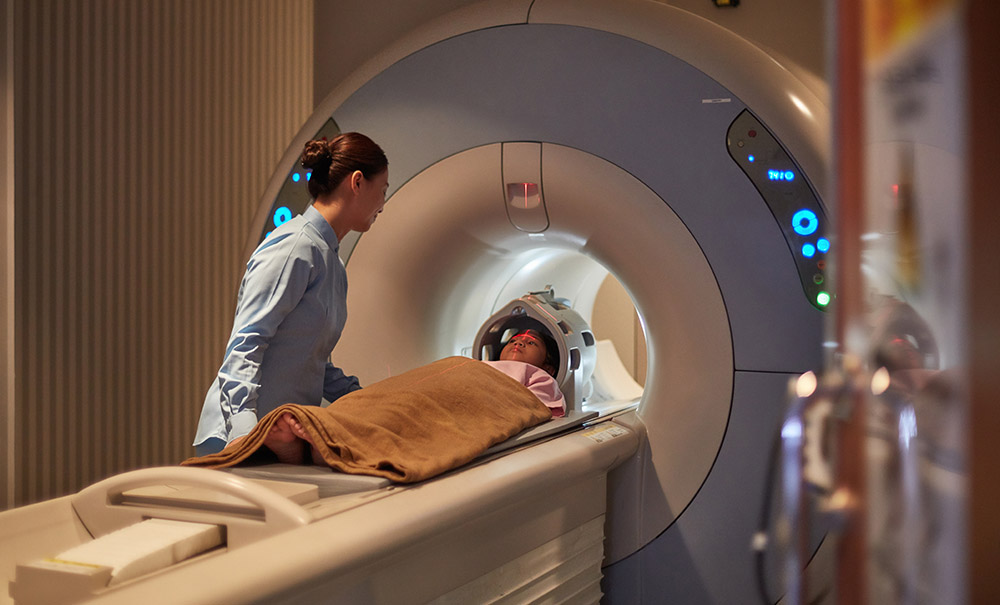
Any tips for students doing medical imaging placements?
My advice for students going on prac is understand what you can and can’t do and be prepared to learn. Take all the opportunities that present themselves to you even if you’re nervous, because they will improve you as both a radiographer and a person.
What do you do when you are in class or on campus?
QUT classes are orientated towards real-world learning and application of knowledge. The classroom practical sessions assist in developing the most basic techniques in radiography to a high standard, before teaching principles of problem solving, so that we as students are prepared for almost any situation we may encounter on placement or in the workplace.
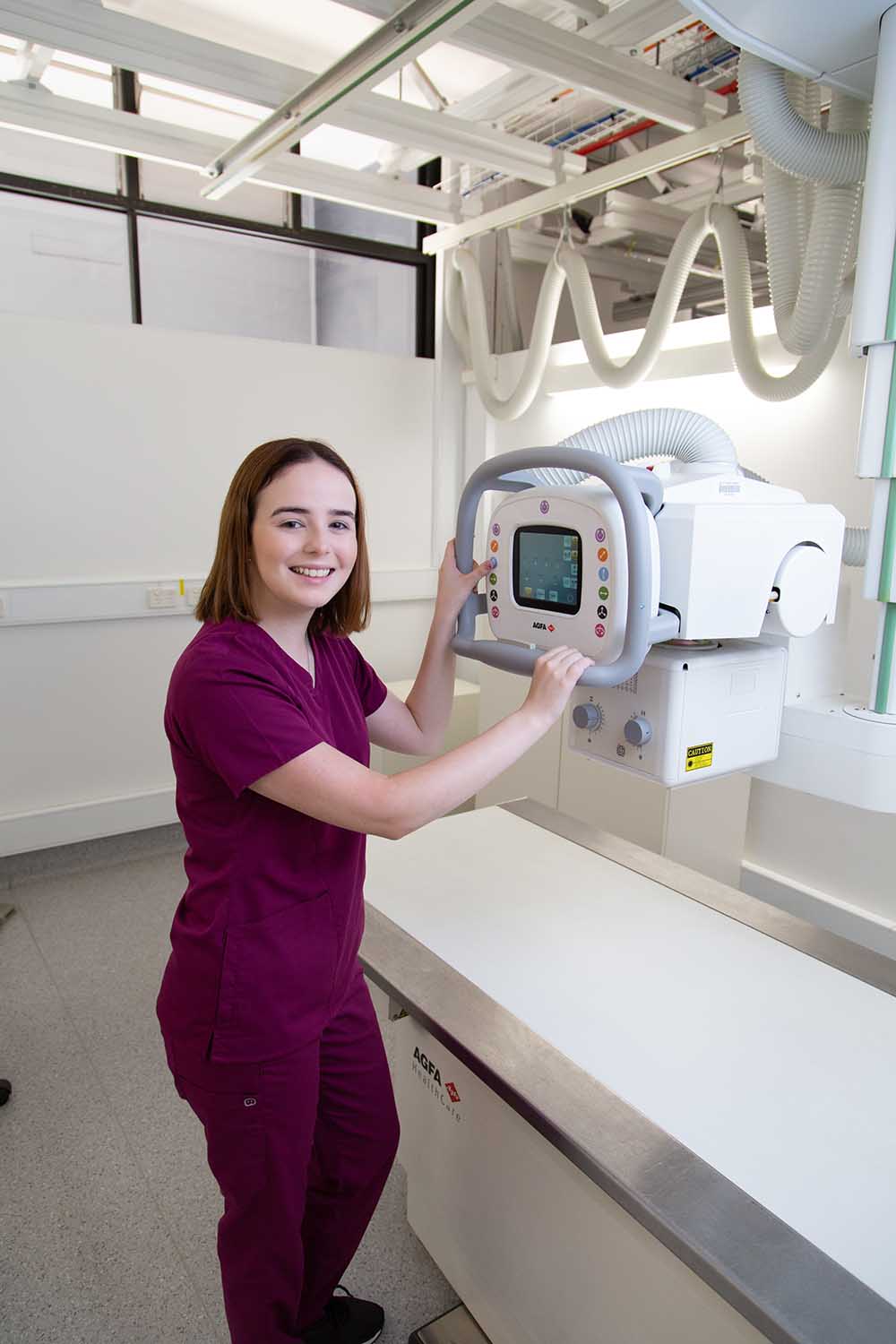
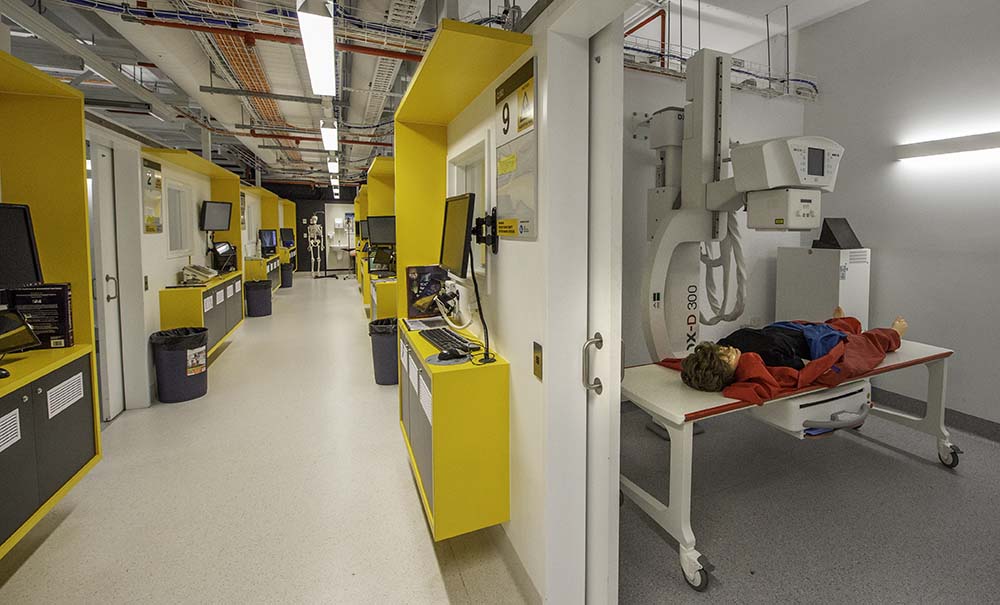
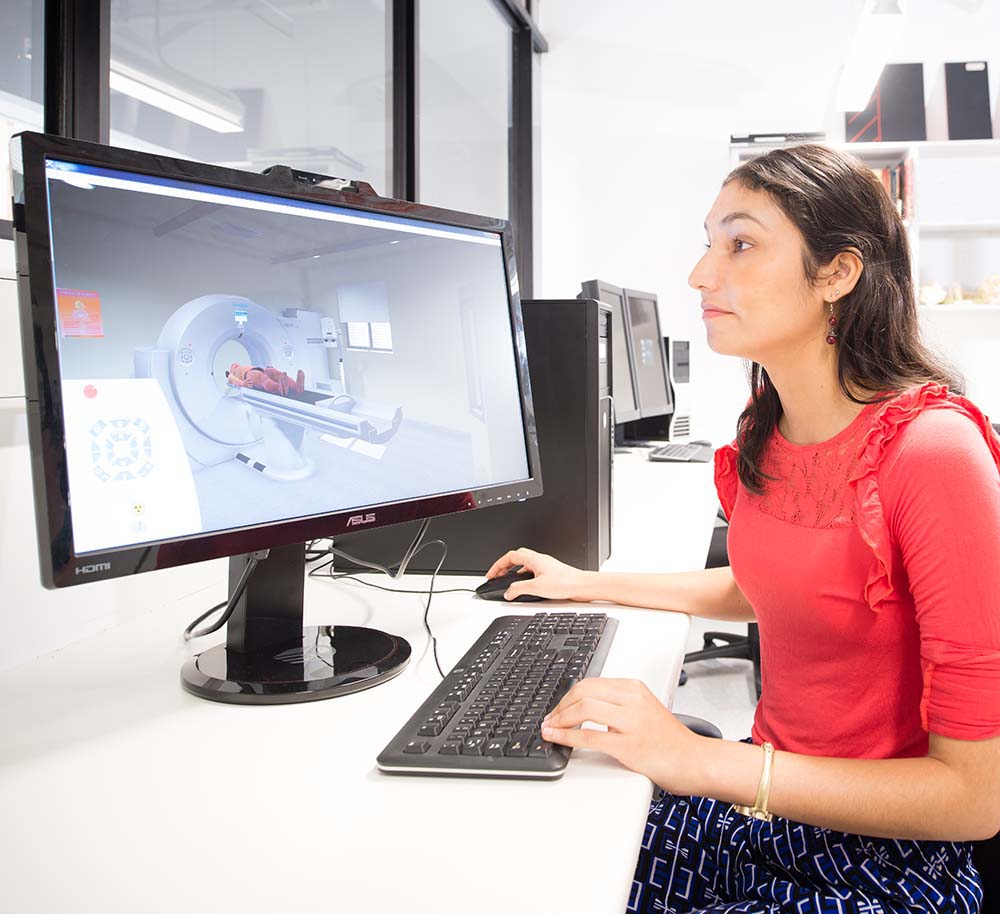
All of our teachers still have some direct involvement in the field and have years of experience working within radiography departments. Our lecturers involve themselves in research, with some of their projects being aimed directly at improving our learning, or they use their own time to continue working in imaging departments. This means that what we learn is relevant and up-to-date with what’s happening in the field. This knowledge has helped me to perform well on placement and has allowed me to develop a network of contacts.
What have you enjoyed about being a QUT student?
Something I really found amazing about student experience at QUT is the sheer diversity of people you can meet. School sometimes feels like it limits your personal growth and your ability to meet people outside of your typical social circle, but this feeling is completely irradicated once you go to university.
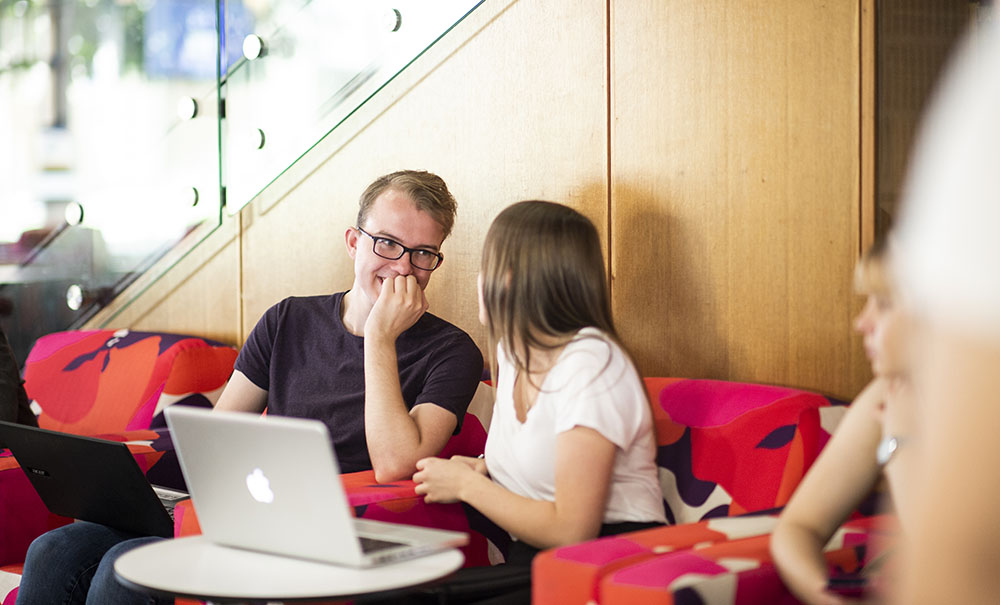
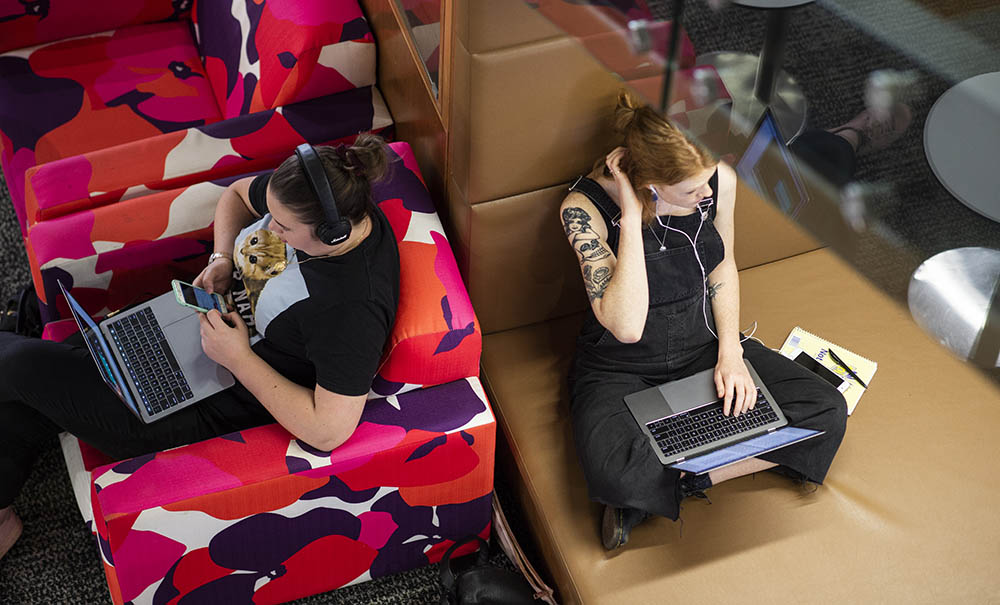
QUT has so many students from so many different walks of life, which really provides you with the opportunity to meet people who you truly get along with and can forge deep connections with. Some of my greatest friends are people I never would have met if I had gone to another university, so I’m always grateful that I chose QUT.
